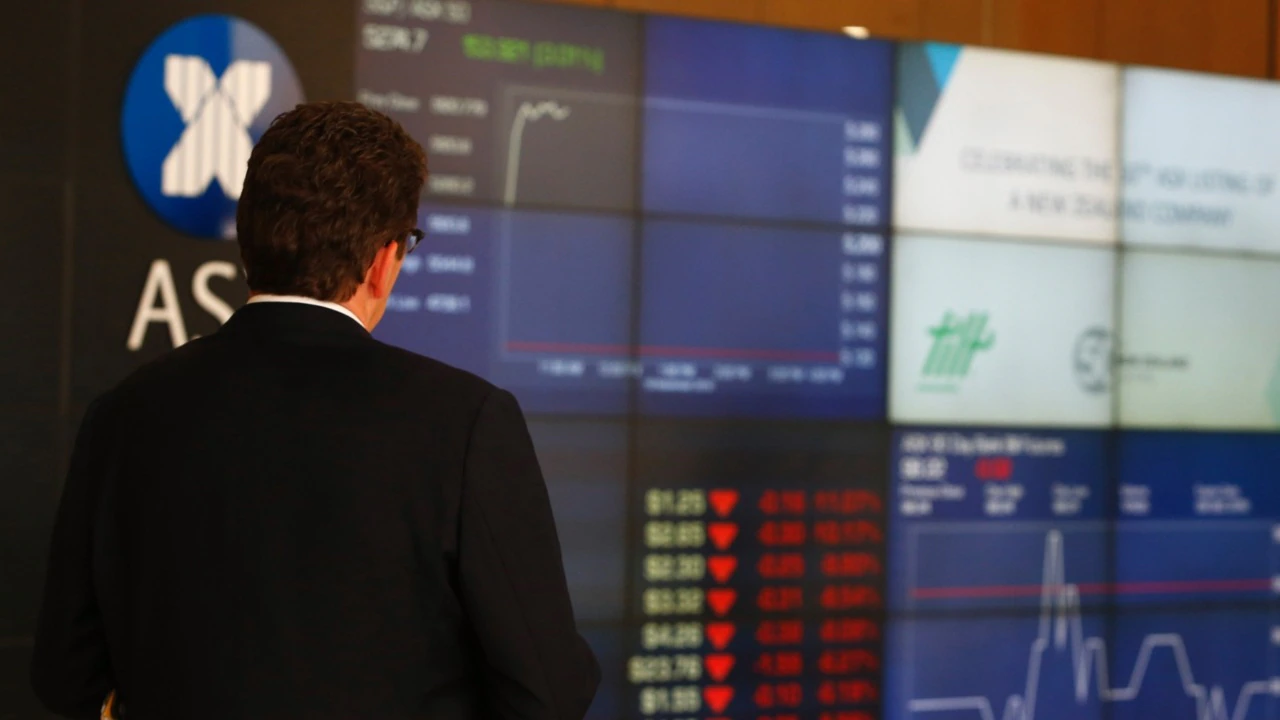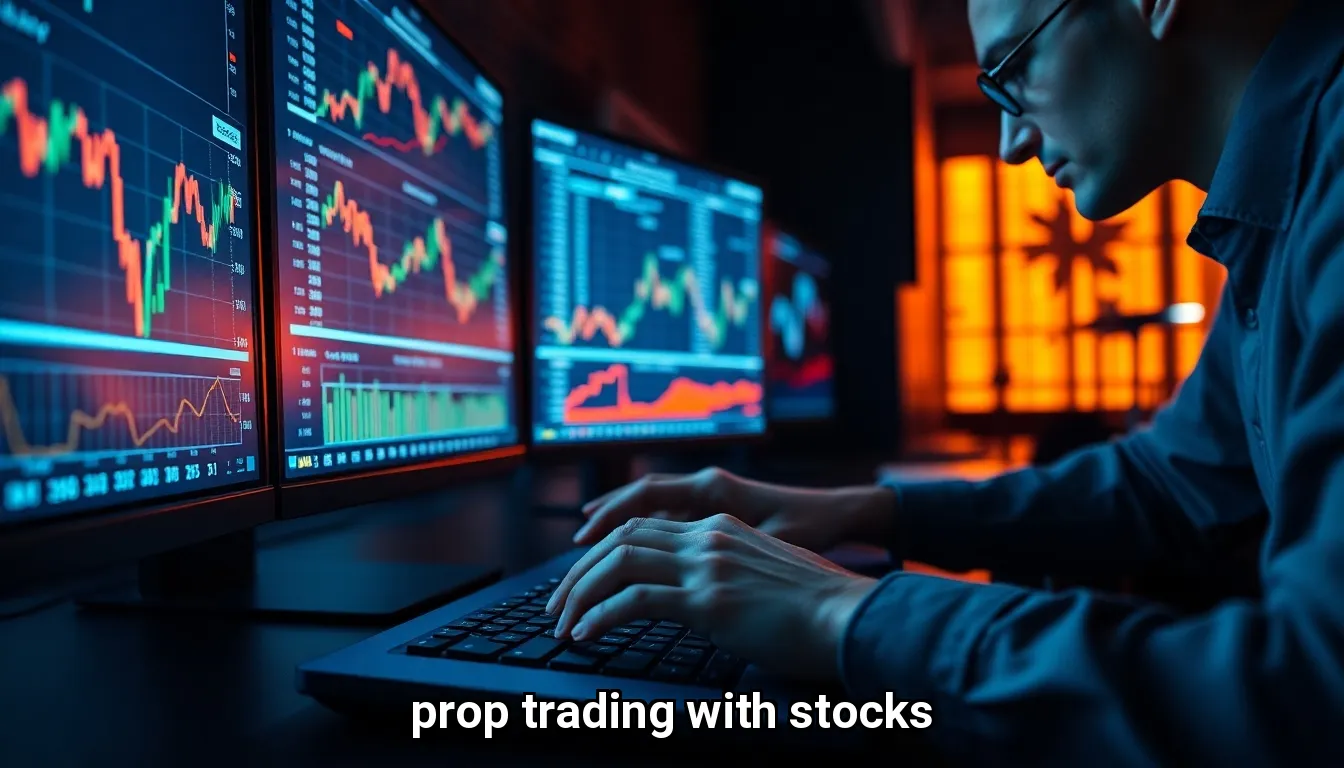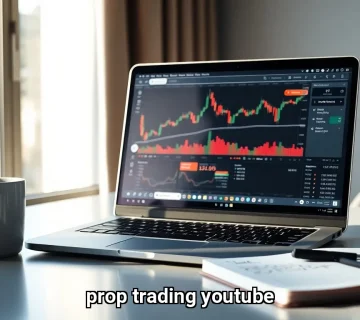If you’ve ever wondered how some traders manage to capitalize on stock market opportunities with impressive speed and precision, prop trading with stocks might hold the answer. Proprietary trading, or prop trading, allows firms and individual traders to use their own capital to make stock market moves, aiming to capture full profits without the constraints of managing client funds. This independent approach opens doors to sophisticated strategies that exploit market inefficiencies, from merger arbitrage to volatility plays. But what exactly makes prop trading with stocks so compelling, and how can traders navigate this fast-paced, high-stakes environment?
Whether you’re looking to understand prop trading stocks as an investment avenue or seeking platforms that empower these specialized strategies, diving into the fundamentals and tools of prop trading is essential. In this article, we’ll unravel the key concepts behind prop trading for stocks, explore popular strategies, assess the benefits and risks, and highlight how innovative platforms are reshaping this space. If you’re ready to explore proprietary trading using stocks and discover how to harness this dynamic method for potential gains, keep reading to learn everything you need to know about prop trading with stocks.
Prop Trading with Stocks
Understanding Prop Trading for Stocks
Prop trading with stocks involves a financial firm or trader using the institution’s own capital to engage in stock market transactions, rather than trading on behalf of clients. This approach enables proprietary traders to capture full profits from their trades, as they do not share gains with clients or intermediaries. Unlike traditional brokerage models, where firms earn commissions and fees, prop trading stocks allow firms to act autonomously and take on greater risk for potentially higher rewards. This autonomy often leads to sophisticated strategies tailored to exploit inefficiencies in the stock markets.
One hallmark of prop trading stocks is the ability to stockpile securities. This inventory management provides two major advantages: it allows a firm to supply liquidity to clients unexpectedly and prepares the firm to navigate illiquid or down markets. For example, a prop trading desk might hold a significant volume of a particular stock during periods of low liquidity, enabling smoother transactions for clients or acting as a market maker. This influence on market dynamics is a key reason why many financial institutions maintain proprietary trading desks separate from client-facing operations.

Common Prop Trading Stocks Strategies
Prop trading for stocks employs diverse strategies to exploit market inefficiencies in prop trading stocks. Key approaches include:
- Merger Arbitrage: Exploiting price gaps in mergers by longing the target stock and shorting the acquirer’s shares.
- Index Arbitrage: Capitalizing on discrepancies between stock indices or futures, like S&P 500 mispricings.
- Volatility Arbitrage: Profiting from volatility differences using options.
- Pairs Trading: Betting on relative price movements of correlated stocks.
- Scalping: Making small profits from rapid, high-frequency trades.
Prop trading stocks often leverages algorithmic trading for precision, with automated systems ensuring disciplined execution in strategies like scalping. Staying informed on market news is critical for success in prop trading for stocks.
Benefits of Prop Trading with Stocks
The appeal of prop trading for stocks lies in several distinct advantages that can enhance profitability and market influence:
- Full Profit Retention: Since prop traders use the firm’s own capital, all gains from successful trades accrue directly to the firm. This contrasts with client-focused trading, where revenues largely come from commissions.
- Increased Market Liquidity: Proprietary traders often act as market makers by maintaining inventories of securities. This activity improves liquidity and narrows bid-ask spreads, benefiting both the firm and other market participants.
- Greater Risk Tolerance: Freed from client constraints, prop traders can take more aggressive positions. This flexibility allows them to capitalize on short-term market inefficiencies or volatility spikes that might be off-limits in client funds management.
- Technological Edge: Prop trading desks frequently invest in cutting-edge trading platforms and analytical tools. These systems support high-frequency trading, complex derivatives strategies, and real-time risk management, giving firms a competitive advantage.
- Strategic Inventory Management: By holding securities strategically, prop traders can quickly meet client demands or manage exposure during volatile periods, smoothing out market disruptions.
For example, a prop trading desk may stockpile shares of a tech company expected to release earnings, positioning itself to either supply liquidity or benefit from price moves triggered by the announcement. This proactive stance often leads to higher quarterly revenues compared to firms solely dependent on client commissions.

Risks and Regulatory Considerations in Prop Trading Stocks
While prop trading offers lucrative opportunities, it carries inherent risks that firms must carefully manage. Since proprietary trading involves the firm’s own capital, losses directly impact financial health. Aggressive strategies can amplify exposure during market downturns, potentially leading to significant drawdowns.
Regulatory frameworks also shape prop trading activities. The Volcker Rule, enacted after the 2008 financial crisis, restricts large banks in the United States from engaging in certain forms of short-term prop trading with securities and derivatives. These regulations aim to reduce systemic risks and prevent speculative behavior that could jeopardize client assets or market stability. However, many smaller institutions and dedicated prop trading firms operate outside these constraints, allowing them more freedom in strategy selection.
Compliance with internal risk controls and external regulations is essential. Prop trading desks typically employ sophisticated risk management systems to monitor exposures, enforce limits, and simulate stress scenarios. Transparency and segregation from client-facing operations can also mitigate conflicts of interest and regulatory scrutiny.
How PropX pro Enhances Prop Trading with Stocks
Platforms like PropX pro are emerging as valuable resources for traders engaged in prop trading stocks. PropX pro offers advanced trading technology designed to support the diverse strategies proprietary traders employ. By integrating real-time market data, algorithmic execution capabilities, and risk management tools, PropX pro enables traders to respond swiftly to market opportunities.
For instance, users of PropX pro can implement complex arbitrage strategies or scalping techniques with minimal latency, a critical factor in capturing small price discrepancies before they vanish. The platform’s intuitive interface also facilitates monitoring large inventories of stocks, helping traders optimize their holdings to provide liquidity and manage risk effectively.
Additionally, PropX pro’s analytics features assist prop traders in identifying emerging trends, volatility shifts, and correlation breakdowns, all of which are essential insights for executing successful prop trading for stocks. By combining technology with strategic insight, PropX pro supports traders in maintaining a competitive edge in the rapidly evolving prop trading landscape.
Choosing the Right Prop Trading Stocks Strategy
Selecting a prop trading strategy depends heavily on the trader’s expertise, risk appetite, and market conditions. For example, merger arbitrage requires deep understanding of corporate actions and legal intricacies, making it suitable for traders with a background in fundamental analysis and corporate finance. Meanwhile, scalping and algorithmic strategies demand strong technological infrastructure and the ability to react instantly to market changes.
Volatility arbitrage appeals to traders proficient in derivatives and options markets, as it involves trading volatility rather than directional price moves. Index arbitrage, on the other hand, suits those who can monitor multiple correlated assets and execute cross-market trades.
Practical advice for prop traders includes starting with a clear risk management plan, focusing on strategies that align with personal strengths, and continuously refining techniques based on market feedback. Incorporating backtesting and scenario analysis can also help validate new strategies before committing significant capital.




No comment